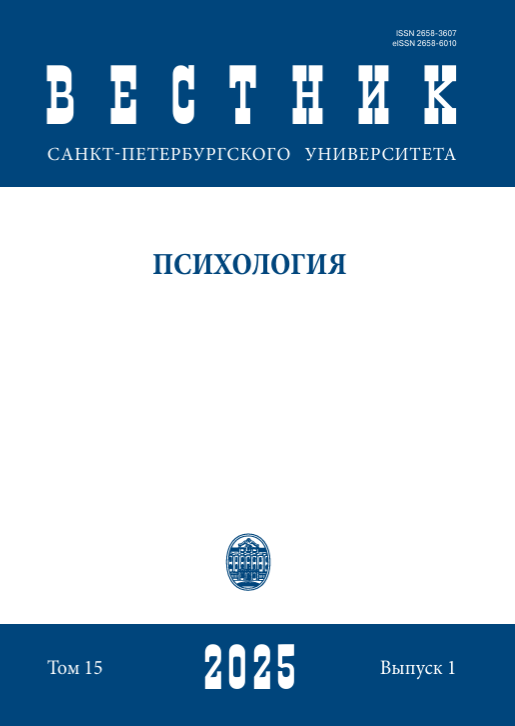The role of the number of meanings in solving problems of recalling ambiguous information
DOI:
https://doi.org/10.21638/spbu16.2025.105Abstract
Most modern studies devoted to the processing of ambiguous information contain in the experiment procedure stimulus material with two possible semantic meanings, leaving out cases where there may be more than two possible meanings. In addition, quite a lot of attention in such studies is devoted to the phenomenon of negative choice and its interpretations, although it is still unclear how to interpret negative choice for two or more non-selected stimulus values. In this study, we made an attempt to differentiate the specifics of processing ambiguous information (if there are more than two semantic meanings) from unambiguous one. Moreover, we tried to clarify how the phenomenon of negative choice manifests itself in relation to alternative categories of choice. We conducted an experiment suggesting the need to make a conscious choice of semantic meaning for ambiguous or unambiguous words, after which it was asked to recall the initial acceptable meanings of the words. Thus, the subject was asked to solve two tasks: the installation task for choosing a semantic meaning and the main task for remembering the presented semantic meanings. The data obtained from the experiment allows us to make a difference in the processing of non-actualized word meanings: although the processing of single-valued and multi-valued meanings requires a similar amount of time, the percentage of errors while remembering multi-valued meanings is significantly higher than single-valued ones. In addition, the data obtained do not allow us to define a clear boundary between the category of negative and positive choice, since no significant differences were found between them within the framework of the proposed experimental procedure. Additionally, it was found out that the mental operations involved in the experimental procedure make it possible to more accurately predict the result of cognitive information processing than the type of information taken as the basis for the stimulus material. The findings may provide valuable contributions to future psychological neurocognitive research.
Keywords:
ambiguous information, unambiguous information, negative choice, cognitive processing, choice task, external factor, recall task
Downloads
References
References
Downloads
Published
How to Cite
Issue
Section
License
Articles of "Vestnik of Saint Petersburg University. Psychology" are open access distributed under the terms of the License Agreement with Saint Petersburg State University, which permits to the authors unrestricted distribution and self-archiving free of charge.




